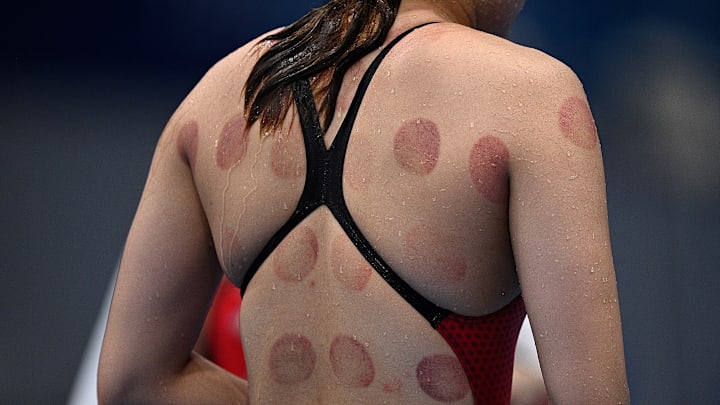If you’re watching the swimming events in the 2024 Summer Games in Paris, you may be wondering why some Olympians are sporting circular bruises. Do Olympic pools have predatory octopuses?
Fortunately, no. The bruises are from a holistic practice called cupping, which uses small glass suction cups placed on targeted areas of the body in an attempt to release tension from the muscles.
Some athletes use an air pump attached to the cups, which creates a pressurized site that pulls on sore and tender muscles and tendons. During the 2016 Games in Rio, Olympic swimming superstar Michael Phelps utilized a heat method, where a flammable liquid-soaked cotton ball is set on fire in the cup before being doused and applied to the skin. “Wet cupping” includes a tool to pierce the skin so blood flows into the cup while it is suctioned to the body. “Dry cupping” doesn’t break the skin, but both methods leave those telltale circular marks.
In events where success or failure can be measured in tiny increments, it’s not surprising athletes will turn to any potential advantage. But does cupping actually work? A hallmark of traditional Chinese medicine, its efficacy is still unclear. Advocates like Gustavus Adolphus College swimming coach Jon Carlson say the “de-compressive” nature of cupping—the suction lifts skin off muscle and bone, which lets blood vessels expand and increase blood flow for rapid healing—makes it beneficial. Because the body believes it might be hurt, it rallies to attend to the problem.
It’s a plausible theory, but with pain being a highly subjective area of research, few reliable studies exist. Anecdotal evidence suggests cupping may reduce pain or possibly help with other conditions, but there isn't enough conclusive research yet, according to the National Center for Complementary and Integrative Medicine.
Still, you’ll probably see the marks on other athletes: Gymnasts have been known to use the technique.
Discover More Answers to Olympics Questions:
A version of this story was published in 2016; it has been updated for 2024.
